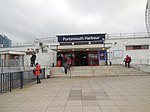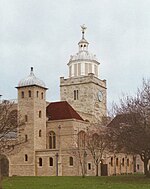Gunwharf Quays

Gunwharf Quays is a shopping centre located in the Portsea area of the city of Portsmouth in England. It was constructed in the early 21st century on the site of what had once been HM Gunwharf, Portsmouth. This was one of several such facilities which were established around Britain and the Empire by the Board of Ordnance, where cannons, ammunition and other armaments were stored, repaired and serviced ready for use on land or at sea. Later known as HMS Vernon, the military site closed in 1995, and opened to the public as Gunwharf Quays on 28 February 2001 after six years of reconstruction (which included the restoration of some of the surviving 18th and 19th-century Gun Wharf buildings). The landmark Spinnaker Tower, which stands close to the site on pilings in Portsmouth Harbour, was opened on 18 October 2005.
Excerpt from the Wikipedia article Gunwharf Quays (License: CC BY-SA 3.0, Authors, Images).Gunwharf Quays
The Canalside, Portsmouth Portsea
Geographical coordinates (GPS) Address Nearby Places Show on map
Geographical coordinates (GPS)
| Latitude | Longitude |
|---|---|
| N 50.7949 ° | E -1.1058 ° |
Address
The Canalside
PO1 3TY Portsmouth, Portsea
England, United Kingdom
Open on Google Maps









